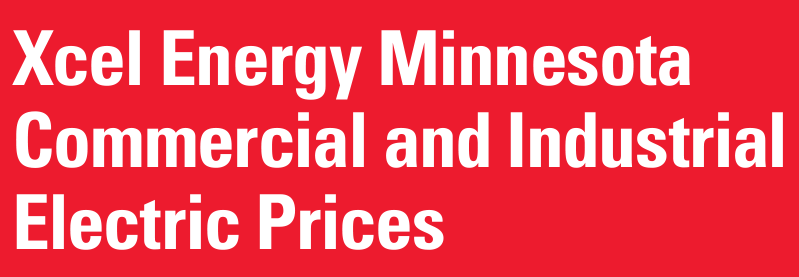- March 18, 2024
- by Jesse Feinberg
What’s happened with Xcel industrial electricity rates?
Xcel industrial electricity rates in Minnesota are up 29% from 2020. In 2020, an industrial Minnesota Xcel customer only paid 7.98¢ per kilowatt-hour (kWh), but by 2022 was paying 10.26¢ per kWh (see graph below “Xcel Minnesota Electricity Rates”). For an industrial site consuming 10,000,000 kWh annually, this increase amounts to an extra $228,000 in annual operating expense.
These recent Xcel industrial rate increases buck a historical steady state of about 7.8¢ per kWh, which was in effect from 2013 to 2020. In other words, while Xcel customers might have been able to count on stable electricity prices in years past, that is no longer the case.

Source: US EIA
Are the Xcel rate increases unique?
Xcel industrial electricity rates in Minnesota are going up, but they’re hardly alone. A similar, albeit smaller, increase can be observed at the national level. This is to say that most of the change in Minnesota Xcel industrial rates can be explained by national-level factors.
To be specific, the average U.S. retail rate of electricity (irrespective of customer class; i.e. not specific to industrial consumers) increased 17% in the same period (2020-2022) that the Xcel industrial rate in Minnesota increased 29% (see graph below “U.S. Electricity Rates”).

Source: US EIA
The broader story is also very similar at the national level. Before the recent 2020-2022 increase, rates had remained remarkably stable, not varying by more than half a cent per kWh.
Why are rates going up?
Both Xcel Minnesota industrial rates and the national-level retail average rate are increasing due to the same factors.
- The cost of transmission infrastructure. According to the Edison Electric Institute (EEI), which represents all U.S. investor-owned utilities, utilities spent $26.7 billion on transmission investments in 2022, up from $20.7 billion in 2016. Once 2023 numbers are finalized, EEI expects that number to exceed $29 billion. In other words, transmission spending will have increased nearly 50% from 2016 to 2023.
- Continued fuel price volatility. Natural gas prices are historically a major driver of U.S. electricity rates. This is because natural gas is fuel on the margin for electricity generation (“fuel on the margin” means the fuel that would be used to generate the next kWh of electricity). Natural gas prices spiked in 2020-2021 (see graph below “Natural Gas Spot Price”) and although they’ve come down significantly in 2023-2024, the recent volatility continues to impact electricity rates, with further rate increases expected as natural gas rises off current lows.

Source: US EIA
Don’t expect rate increases to slow down
While a short-term decline in natural gas prices seems like an optimistic sign for electricity consumers, there’s ample reason to believe that rates are not coming down any time soon – and are more likely to continue going up.
This is due to the demand side of the equation: Demand for electricity, stable for a decade plus, is expected to skyrocket. According to recent reporting by The New York Times, “peak demand in the summer is projected to grow by 38,000 megawatts nationwide in the next five years…which is like adding another California to the grid.” This finding, based on research by Grid Strategies, a consulting firm, is driven by the explosive growth of data centers, industrial facilities, hydrogen plants, and electrification.
What can you do about the increase in Xcel industrial electricity rates?
Adding another California to the grid is likely to drive electricity prices up. As Xcel industrial electricity rates increase, your costs will also increase.
Your two best options are to become more efficient, although that can only take you so far, and to consider alterative sources of electricity. Specifically, onsite solar may be an option for you if your site allows for it. Nokomis Energy has written extensively about how to determine whether onsite solar can make sense, but the best way to find out more is to have a conversation about it with an informed developer.
Learn More
Does it seem like onsite solar might be a good solution to meet your economic and energy goals? Fill out the form below to get started.
Nokomis Energy is a clean energy developer based in Minneapolis, Minnesota. Our mission is to identify opportunities to create clean, low-cost energy projects for our customers. We work directly with our customers and partners to implement and build clean energy solutions that work for your specific needs.

